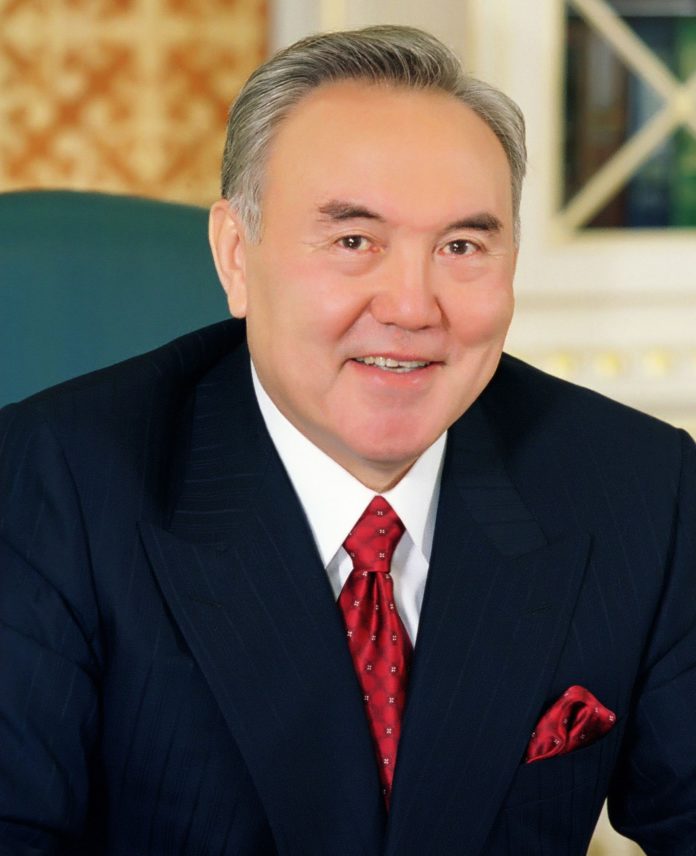Efforts for the creation of international peace and order have been introduced and promoted by the international community from countless platforms. Various intellectual circles of different backgrounds, leaders of different countries and leading policymakers of many states have remained active in presenting their ideas for creating an international peaceful order by diffusing the threats of nuclear weapons. The discussion on peace and its permanent association to the international system of realist driven hardcore realities always, in this way, remained a gravitational point of world politics. As a result, an extremely loud voices for peace and their appropriate attachment to the international system are rising from every corner of the world where leaders are committed to support international peace and stability. The contemporary debate on peaceful world order in the presence of toxic international environment of persistently emerging strategic clashes between states cannot be completed without calculating the peace efforts of different countries. In reaction to an undeniable international system of countless strategic competitions between different nations, the Kazakhstan’s vision of international peace cannot simply be overruled.
The president of Kazakhstan, Nursultan Nazarbayev introduced his mission of international peace and expressed the vision of his nation at different world forums. President Nazarbayev introduced the vision of his country which is purely inherited in a secure future of the world. A world free of nuclear threats can not only preserve peace but it will also secure the future of mankind, according to Kazakh president Nazarbayev. During a meeting of world’s leaders at Washington on the occasion of the Fourth Nuclear Security Summit (NSS), the President of Kazakhstan mentioned the need for extending the anti-nuclear aspirations of the likeminded people from world’s capitals. He did not only appreciate the six-year process of NSS consisting of four meetings, but he also praised the 44th American President, Barack Obama’s efforts in this regard. The leading state officials from Astana also admired the American initiated NSS process while taking practical steps for the strengthening of nuclear security, non-proliferation of nuclear weapons, and peaceful uses of nuclear energy which are the main pillars of international non-proliferation regime. It was considered an appreciable step of a country which is positively cooperating with the international non-proliferation regime. Additionally, Astana created a suitable example for the other nations by taking all possible measure for enhancing of NSS’s scope. The Kazakh state authorities are also determined in promoting their agenda at national, regional, and international levels.
Parallel to the NSS process which was initially started from Washington in 2014, the Republic of Kazakhstan proposed a resolution in the seventieth session of United Nations General Assembly (UNGA) on October 22, 2015. The resolution on Universal Declaration on the Achievement of a Nuclear-Weapon-Free World was adopted by the United Nations on December 07, 2015. It was an attempt to recall longstanding support for the total elimination of all nuclear weapons. Moreover, it was a recognition for the need to the achievement of a world without nuclear weapons. The draft resolution emphasized the fundamental role of the Treaty on the Non-Proliferation of Nuclear Weapons. The twenty points annexes of the resolution highlighted the listed points which are necessary for the creation of a cooperative international atmosphere where the members of the UN were demanded to provide their full support to the greater concern of a nuclear free world.
The UNGA adopted another resolution for the creation of Central Asian region as a Nuclear-Weapon-Free Zone (NWFZ) in a 51st Plenary meeting on December 05, 2016. It was the resolution of 71/65 which recalled the Generally Assembly resolutions of 65/49 of December 08, 2010, 67/31 of December 03, 2012, and 69/36 of December 02, 2014. Originally all such efforts were inherited in the Treaty of Semipalatinsk declaring Central Asia as a NWFZ. It was formally known as Central Asian Nuclear-Weapon-Free Zone (CANWFZ) on September 08, 2006. The treaty declared the five Central Asian states, Kazakhstan, Kyrgyzstan, Tajikistan, Turkmenistan, and Uzbekistan as the potential areas free of non-peaceful nuclear activities. The commitment of five republics of Central Asia was the fifth step under the greater vision of NWFZ after Latin America, South Pacific, Southeast Asia, and Africa. This treaty was signed in Semipalatinsk, a north-eastern area of Kazakhstan which was prominently known as primary nuclear testing site for former Soviet Union. This site was considered to be a nuclear testing site for Soviet Union during the decades-long clash of Cold War. The Soviet officials conducted approximately 456 nuclear tests including both atmospheric and underground from 1949 to 1989.
The demise of the Soviet Union and the autonomous status of Kazakhstan under the leadership of president Nursultan Nazarbayev changed the course of history when it was decided to declare the region of five former Soviet states as an area free of nuclear weapon activities. It was a substantial step by Nazarbayev which not only invited the four neighbours of Kazakhstan for the signing of CANWFZ but it also communicated the potential of Astana for the creation of a nuclear free world.

With the efforts of Kazakhstan, the member states of UN agreed to enhance the scope of international non-proliferation regime by taking further effective measures. The landmark development in this regard came during the 64th session of UNGA when the resolution 64/35 approved. On December 02, 2009, the UNGA declared 29th August globally as the International Day Against Nuclear Testing. The proposal was initially coined by Kazakhstan, and it was decided to realize this as a call for spreading awareness and education about the toxic effects of nuclear explosions. It was also decided to consider it as a struggle to achieve the longstanding goal of establishing a world free of nuclear shadows. The primary objective of this initiative was to arrange various activities for the public around the globe which would enable the common people to understand the effects of nuclear testing. As a result, the year 2010 witness the inaugural ceremony of International Day Against Nuclear Testing, and an unstoppable series of activities including, seminars, symposiums, seminars, exhibitions, and other activities globally. Akin to 29th August, another step of UNGA for further mobilization of international community declared 26th September as the International Day for the Total Elimination of Nuclear Weapons. Such occasions by celebrating different days are mainly intended to keep the total disarmament at high priority globally.
In 2011, the government of Kazakhstan categorical emphasized the Kazakh’s mission of implementing an international disarmament campaign. Astana arranged an International Forum for a Nuclear Weapons Free World in which president Nazarbayev requested the invited leaders from different parts of the world to acknowledge the Kazakhstan’s vision of making the world free of all nuclear weapons. It was later requested to the representatives of different countries to draw a roadmap for the fulfillment of Nazarbayev’s peaceful vision. In the end, the meeting was ended positively with an Astana Declaration stating it is now opportune for all States that possess nuclear weapons to pursue steps toward the total elimination of nuclear weapons at the earliest possible time. It was observed mainly as an admirable endeavour of the Republic of Kazakhstan for the noble goal of achieving a world free of nuclear weapons. In this way, the participating members of this forums admired the excellent agenda of the Kazakh nation.
The combination of nuclear disarmament and nuclear non-proliferation rooted in Astana’s dream of making the world a peaceful place for mankind later flourished in 2015 when the Kazakh leaders signed an agreement as a host country with the International Atomic Energy Agency (IAEA) for the development of an international low-enrich uranium bank. This bank would be responsible to provide the world with a guarantee supply of the fuel for civic nuclear energy. This move of the Kazakhstan for hosting a low-enrich uranium bank is considered to a great contribution for the strengthening and supporting the of international non-proliferation regime.
To convince people from the world’s capital on the development of an international peaceful world, the leading state authorities from Astana launched a global campaign ATOM (Abolishing Testing. Our Mission) in 2012. Under the leadership of president Nazarbayev, the government of Kazakhstan decided to launch the ATOM project from Nazarbayev Centre (commonly known as a research organization). This research facility was primarily designed to develop a nationwide culture of research and information along with advancing the agendas of nuclear responsibility, nuclear disarmament and nuclear non-proliferation at global level. With reference to ATOM project, the Kazakh nation communicated its mission of encouraging international community for the abolishing of nuclear testing which could be an appropriate step for preventing the spread of nuclear weapons. The largescale advancement of ATOM initiative was further clarified by president Nursultan the threat of nuclear insecurity keeps the world on the edge of catastrophe. Waging peace takes courage, vision and an unwavering commitment to nuclear responsibility.
The mission of Kazakhstan is appreciable under the committed leadership of president Nursultan Nazarbayev who changed the fate of his nation and crafted a new path for the world. Under the Nazarbayev government, the Kazakh nation agreed to change the future of Kazakhstan by renouncing their nuclear arsenals the world’s fourth largest. After securing its independent status under sovereign values in 1991, the initial leadership of Kazakhstan preferred to shut down the Semipalatinsk nuclear site. Further improvements for cooperating with the Washington’s global campaign of non-proliferation came later when the Kazakh officials decided to revert the nuclear history of their country. In this way, Astana has showed its courage to the international community under the greater vision of president Nazarbayev. The mission of developing a nuclear-safe-world has been taken as a serious responsibility by Astana, and the leading Kazakh officials showed their determinations to the world by convincing the people living in capital cities of the world on peaceful international system.
The Kazakh government is committed in taking every possible measure to let the world realize the significance of making it safe from nuclear weapons by banning nuclear testing. Leaders from Astana are strongminded in advancing the vision of their nation worldwide because they believe that the maintenance of an active international network of bilateral and multilateral gatherings of state leaders could be an adequate measure towards the banning of nuclear testing. It is also observed by Astana that the total disarmament or total elimination of nuclear weapons from the world can ensure a peaceful future of mankind. It will be further helpful in providing an absolute guarantee against the use of threat of nuclear weapons to the mankind. In this way, the dream of a peaceful world will become an undeniable reality and irrefutable truth with the devoted efforts of Kazakhstan.




